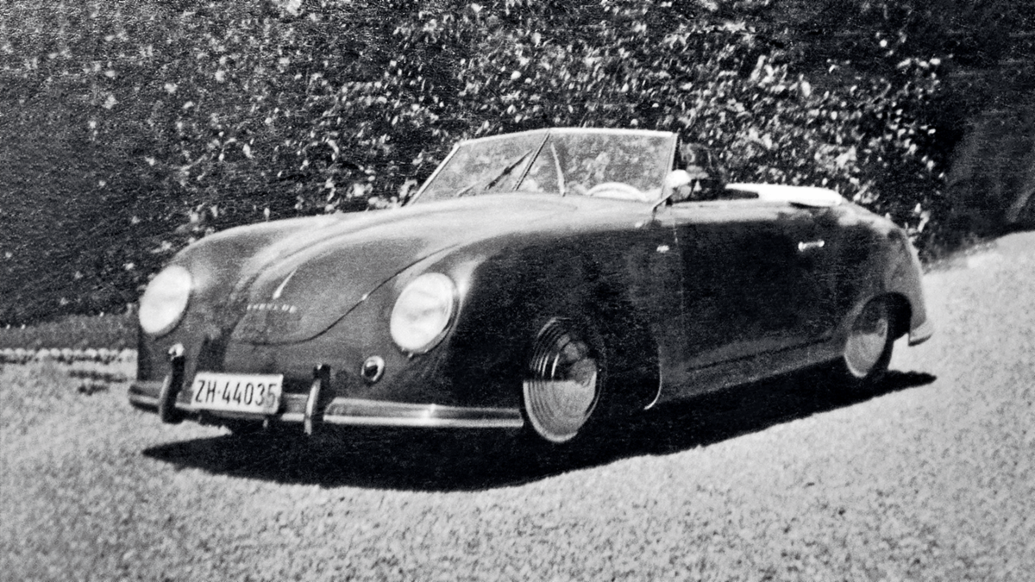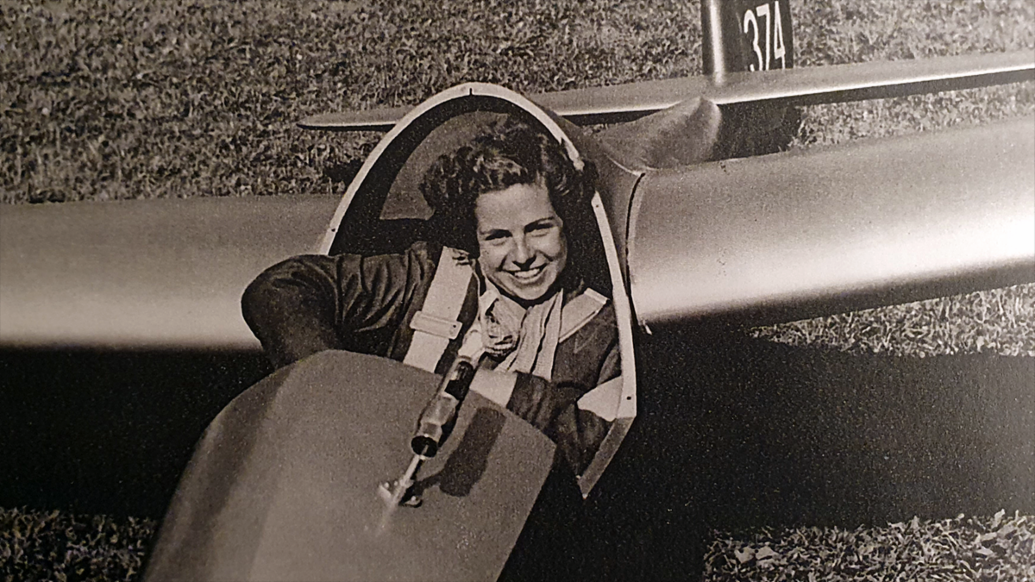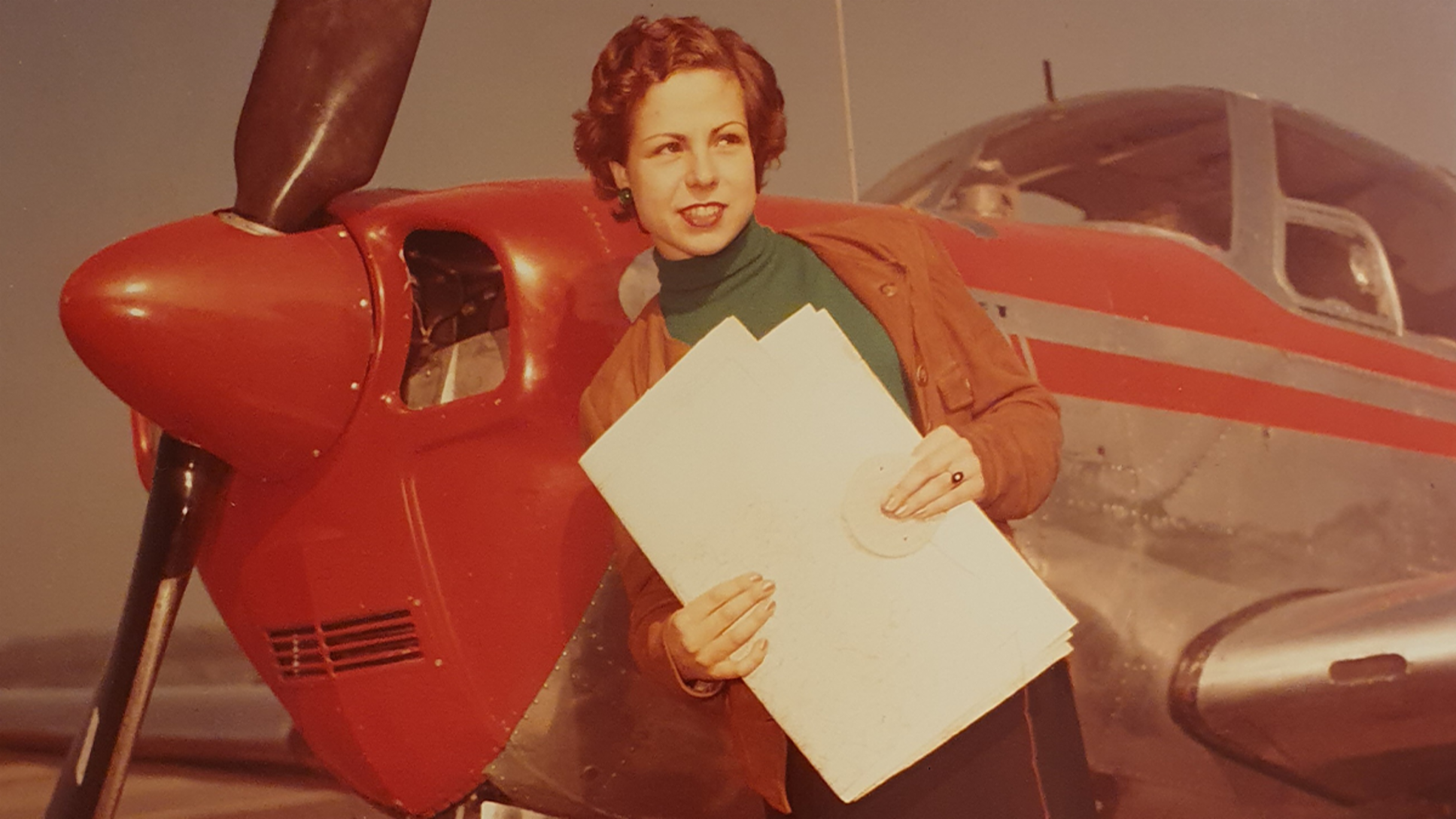“I’m all alone with my bird; how it obeys my every command and carries me through the air. A simple mistake could cost me my life. But that’s what makes it so appealing, what gives me this sense of pride and freedom.” Jolantha Tschudi was just 18 years old when she documented the overwhelming experience of her first solo flight in her diary. It was her father who had ignited her passion for gliding 13 years prior, when she was five years old. “Her whole face was aglow, and she squealed with delight whenever we turned,” Jacques Tschudi said, describing his young daughter’s moment of awakening above the Swiss Alps.
Jolantha was thus predestined to be an adventurer. “She didn’t know what fear was,” says her son Christian Neukom. “She loved to explore uncharted territory.” That was also the case when she attended gliding school in Belp near Bern after secondary school in 1944. Flying was almost entirely a male preserve back then. The 18-year-old wasn’t afraid, but the weight of responsibility was heavy on her young shoulders.
The beginning of an exciting career as a pilot
“If I fail, will my successors have to build on my failure?” But there was no need for concern, as she mastered all of the obstacles. This marked the beginning of an exciting career as a pilot, which would take Tschudi on an adventurous path to Africa.

More than just a pioneer in the air, Jolantha Tschudi was also open to new experiences on the ground. She was ecstatic the first time she heard about a new sports car that goes by the name Porsche in 1948. “For her, driving and flying meant freedom and adventure,” says Christian Neukom. And she made her dream come true with the stylish Porsche 356, which was extraordinarily modern at that time.
The Geneva International Motor Show promptly made the 356 an insider tip
In June 1948, the first car with the name Porsche obtained its general operating permit in Gmünd, Austria. With the 356 “No. 1” Roadster, Ferry Porsche fulfilled a dream – that of his own sports car. A courageous plan for a difficult period in the late 1940s. Porsche found its first enthusiasts in Switzerland, which as a neutral country was largely untouched by the humanitarian and economic catastrophe that was the Second World War.
In winter 1948, Bernhard Blank, a hotelier and car dealer in Zurich, owned two of the first Porsche ever built: a 356/2 Coupé, which he exhibited on the ground floor of his hotel. And a dark-blue 356/2 Cabriolet with a body by Gebrüder Beutler, which he sold to Jolantha Tschudi – making her the first woman ever to buy a Porsche worldwide. Blank had one request before delivering the Cabriolet to its new owner. He wanted to present it alongside the 356/2 Coupé at the Geneva International Motor Show in March 1949. The brand’s first trade fair appearance was a huge success and won over the trade press, promptly establishing the Porsche 356 as an insider tip among Europe’s automobile enthusiasts.

Jolantha Tschudi lost both parents when she was still young. Her father, the founder of the AMAG dealership in Zurich, died in 1944. Her biological mother, who died when Jolantha was just three years old, was but a faint memory. “She learned at an early age to be assertive,” says her son Christian Neukom, looking back. “And she didn’t let anyone get in her way.”
She studied ethnology in Neuchâtel and, in December 1946, set off on the first of her extended study trips to Africa with the curator of the ethnographic museum there and a pilot friend – not in the glider, but with a single-engine Stinson. That, too, was an extraordinary adventure. “They ultimately covered a distance of 13,000 kilometers,” says Neukom. “And they had to make no less than six emergency landings.” Impure gasoline had blocked the carburetor. “It was always a struggle to get the plane down quickly so that they could repair the engine.”
But that didn’t stop Tschudi from flying to Africa again and again in the years to come. Together with the director of Museum Rietberg, Zurich, she visited indigenous African peoples, hitherto unknown in Europe. Readers of the Neue Zürcher Zeitung newspaper awaited her accounts from far-off lands in her regular column, “Letters from the Bush.” “My mother was probably the first European woman to live with the Tuareg people in the Sahel region for an extended period of time,” says Christian Neukom. She published a scientific reference book on prehistoric cave art in the Tassili n’Ajjer mountain range in the Sahara.

Jolantha Tschudi was fascinated by hunting, another male preserve, and even played the cello in a chamber orchestra. But she never lost sight of her great passion, which was gliding. She held a variety of altitude and distance records and was a member of the Swiss national gliding team. She used the 356/2 Cabriolet with license plate number ZH 44035 for extended trips to various gliding locations in the Alps. But her joy was short-lived, as she hit a curb at the Julier Pass in the Canton of the Grisons, significantly damaging the car, which she then sold to her brother.
An extraordinary life
After marrying Louis Neukom and the birth of their two sons, she gave up her passion, flying. “It was really difficult for her,” says Christian Neukom. “But she said the sense of responsibility she had for my brother Yves and me was bigger than her longing to fly.” She even abandoned her research trips for the sake of her family, focusing instead on her passion for hunting and dedicating herself to graphological studies. Jolantha Tschudi died at the age of 86 in 2011.
Her extraordinary life provides us with a glimpse of the early days of the Porsche success story and a time when the company found a kindred spirit in its first female customer.
Info
Text first published in the Porsche customer magazine Christophorus, No. 407.
Copyright: All images, videos and audio files published in this article are subject to copyright. Reproduction in whole or in part is not permitted without the written consent of Dr. Ing. h.c. F. Porsche AG. Please contact newsroom@porsche.com for further information.


